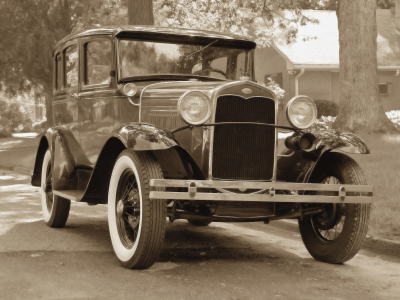Car Insurance Coverage
A history of car insurance coverage, a general overview of what it is, and it’s different components.
A great deal can be written (and indeed, has been written) on car insurance. There are so many components to consider that one could easily fill a book. While exploring these components in detail is necessary, it’s also a good idea to take a look at car insurance coverage from a very general standpoint.
A Brief History of Car Insurance Coverage
In the larger insurance realm, auto insurance is part of what’s known as property and casualty insurance, or P&C. In addition to auto insurance, common types of property and casualty insurance include homeowner’s, renter’s and most commercial insurance products. The origins of P&C insurance in the United States dates back to colonial times, when groups of neighbors would establish simple communal burnout funds. One of the first of these funds was founded in Philadelphia by none other than Benjamin Franklin.
The first true auto insurance policy was a liability only policy written in 1897 in Dayton, Ohio, by Travelers. This policy, purchased for $1,000 (an astounding amount of cash in the day) simply covered the driver against accidental death, bodily injury and property damage. Fortunately for us, auto insurance today covers a lot more for a lot less.
As cars became more commonplace during the first years of the 20th Century, auto insurers were beginning to determine auto insurance premiums based on demographics and risk. Both Farmers Insurance Group in California and State Farm Insurance in Illinois were founded in the 1920s and originally sold auto insurance policies to, you guessed it, farmers. Why? Well, at the time it was believed farmers were good drivers simply because they were farmers. Today auto insurance risk assessment is much more scientific, literally considering thousands of variables.
Liability Car Insurance Coverage
At a basic level, auto insurance is comprised of two main components: liability and full coverage. As it did for that guy in Dayton over a century ago, liability auto insurance today covers drivers against accidental death, bodily injury and property damage. It also covers against damages caused by uninsured and underinsured motorists. This coverage is known as UM/UIM.
Liability coverage is required in all 50 states, the District of Colombia, Puerto Rico and throughout Canada. Some states also require UM/UIM coverage. Exact coverage requirements vary, but many areas require only a small amount of coverage. These state minimum limits are generally inadequate for anything other than minor accidents.
Many insurance professionals recommend carrying liability limits of at least $50,000 for bodily injury to one person, $100,000 for bodily injury to any group of people and $50,000 in property damage in any one accident. This is expressed in industry standard “split limit” format as 50/100/50. Some companies also offer a combined single limit, or CSL, coverage. The rough CSL equivalent to a 50/100/50 policy is $100,000 CSL. Both of these limits well exceed all current legal requirements.
Full Coverage Car Insurance Coverage
Full coverage protects your own car against property damage in a wide variety of situations. As its name implies, collision coverage helps fix your vehicle if it is hit. Comprehensive coverage covers a wide variety of other perils, including theft, vandalism, animal strikes and auto glass damage.
No government entity in the United States legally requires full coverage, however most auto lenders require it as part of their lending agreements. Failing to do so opens you up to “force placed” insurance, which is extremely expensive. If you’re making payments on your car, keep full coverage. It’s worth it.
Trackback from your site.


Reviews (2)
Carol Latocha
| #
Question: Is my car covered by my own insurance if damaged in any other privet drive-way than my own?
Reply
Michele Wilmonen
| #
Yes, your vehicle’s coverage is good when in anyone’s driveway.
Reply